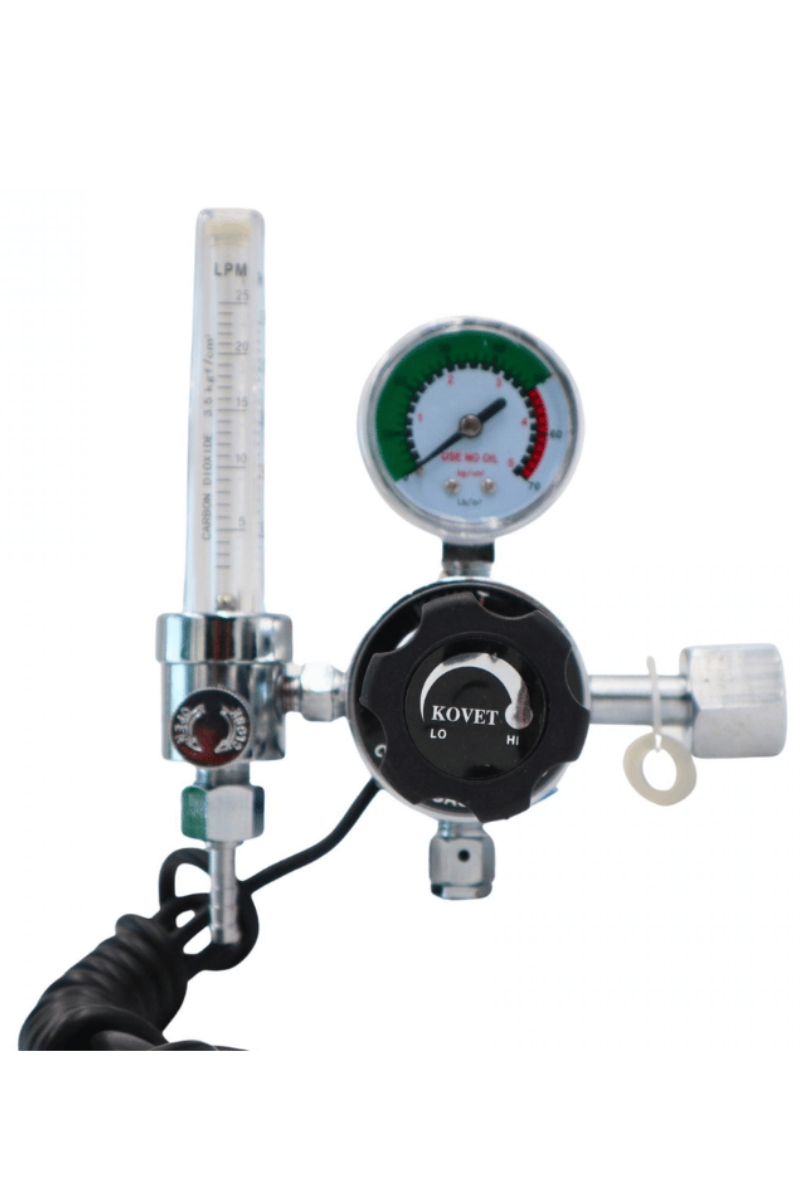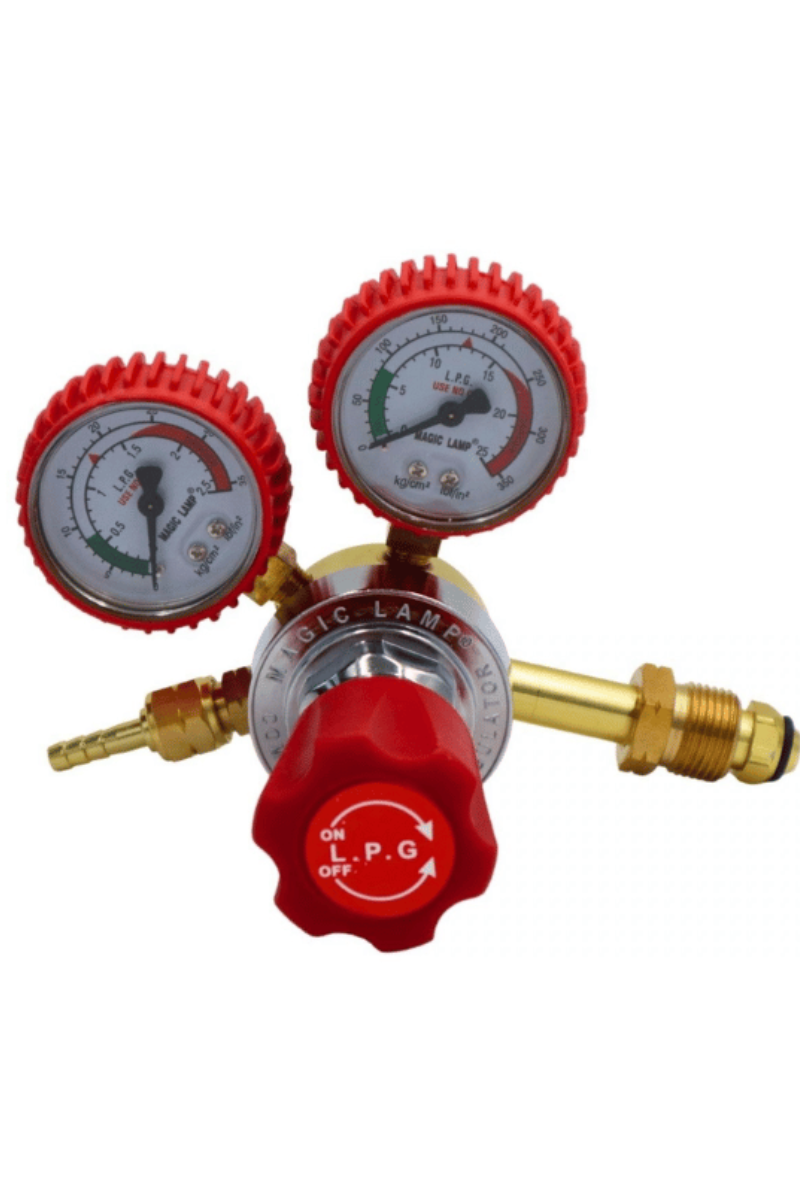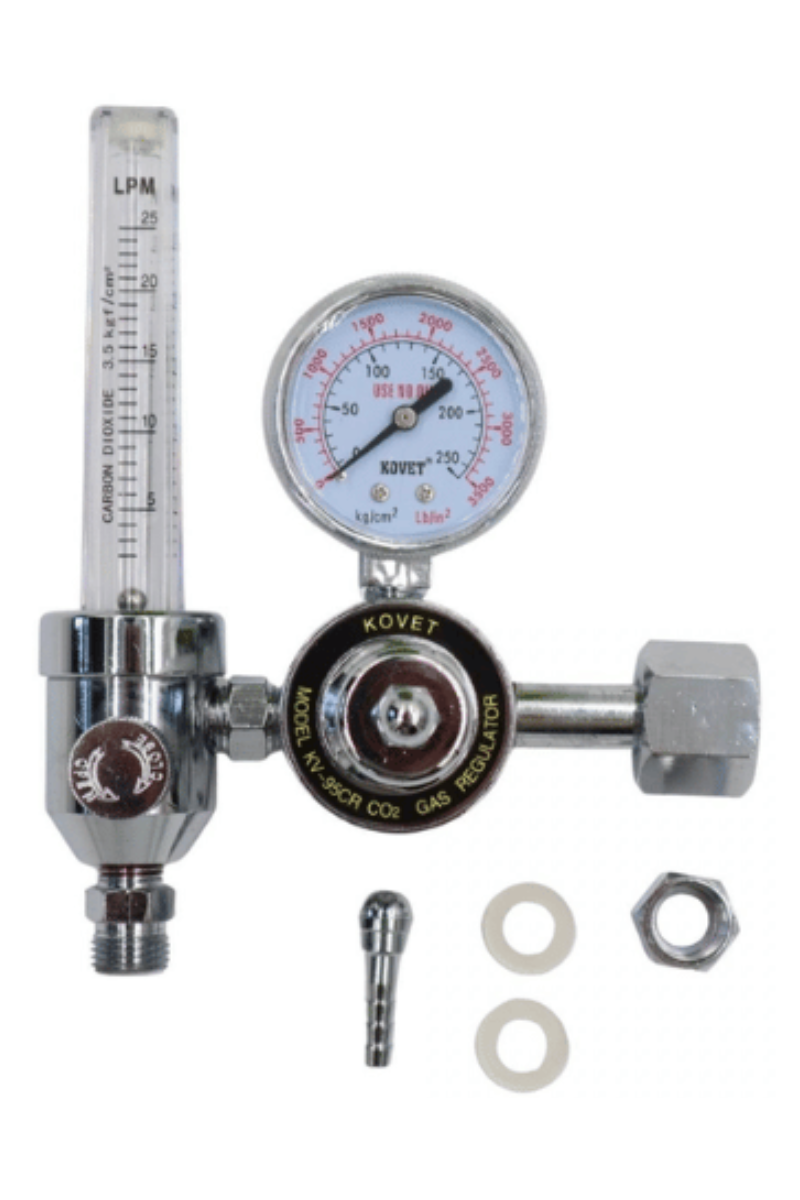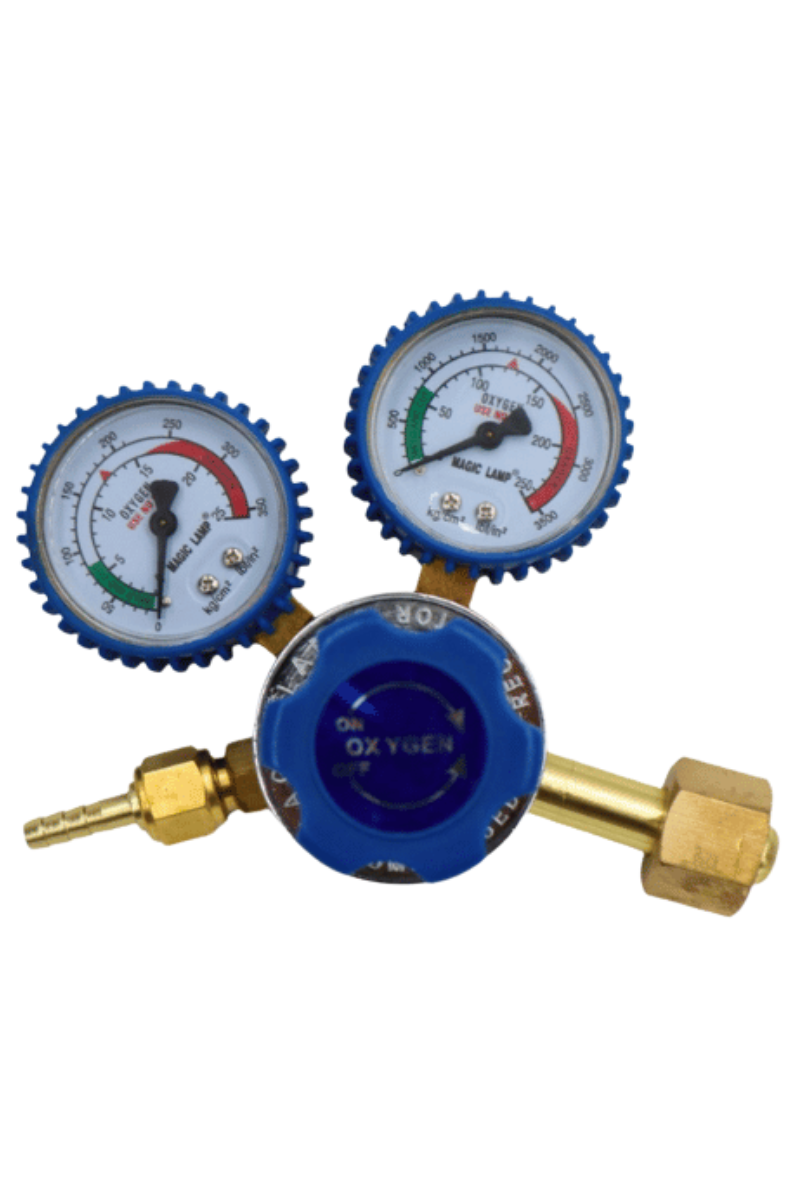A small device with a big role in pressure systems.

In the operation of machinery, or even within our homes, pressure is a critical factor that must be controlled precisely. Pressure that is too high or too low can directly impact performance and even safety. This is where the pressure regulator plays a vital role.
What is a Pressure Regulator
A pressure regulator, also known as a pressure reducing valve, is an essential device used to automatically control the pressure of a liquid or gas to a desired level. Whether it's in pneumatic, gas, or water systems, the function of this gauge is to reduce the high pressure from the primary source to a safe and suitable level for various applications, such as measurement tools, machinery, or equipment that requires consistent pressure.
Principles of Pressure Regulator Operation
- If the pressure is too high, the regulator will partially close the pathway to reduce the pressure.
- If the pressure is too low, the regulator will open the pathway more to increase the pressure.
Types of Pressure Regulators
Selecting the correct type of pressure regulator for your application is crucial, as each type is designed to accommodate different fluids and environments. Choosing the wrong type can lead to inefficient system performance or even damage.
1. Air Pressure Regulator
- Used to control the pressure of compressed air.
- Features a valve and a pressure-sensitive diaphragm.
- Operates with fast and responsive action.
- Pneumatic systems in industrial factories.
- Air-powered tools such as air guns, spray painters, and automated systems.
- CNC machinery or other pneumatically controlled equipment.
- Relatively affordable.
- Available in various sizes.
- Easy to adjust pressure with a knob.
- Should not be used with other fluids like water or gas.
- Must maintain a clean air filter to prevent contaminants from entering the system.
2. Gas Pressure Regulator
- Designed for use with various gases, such as LPG, NG, CO, and oxygen.
- Often has a tightly sealed structure to prevent leaks.
- Operating pressure varies depending on the type of gas.
- Gas stoves in households.
- Gas systems in industrial factories.
- Oxygen tanks in hospitals.
- Welding applications that use gas as an aid.
- Provides high accuracy and consistent pressure.
- Materials are resistant to corrosion from certain types of gas.
- You must select a regulator specifically designed for that particular gas (for example, an oxygen regulator should never be used with LPG).
- Regularly check for leaks and replace seals when they become worn out.
Characteristics:
- Designed specifically for use with liquids, such as water.
- Helps control water pressure from the main supply line to a suitable level.
- Internally features a diaphragm or piston that works with a control valve.
- Plumbing systems in homes or high-rise buildings.
- Water filtration systems, washing machines, and water heaters.
- Automatic plant irrigation systems.
- Protects pipes and downstream equipment from over-pressurization.
- Extends the lifespan of various water-using appliances.
- Do not install in direct sunlight or areas with high heat.
- You must vent the system before actual use to prevent water hammer.
Characteristics:
- This type of regulator reduces pressure in two stages within a single unit.
- The first stage reduces the inlet pressure to a value close to the target pressure.
- The second stage fine-tunes that pressure to be more stable and consistent.
- Research requiring stable pressure, such as in laboratories.
- Medical devices that demand high precision.
- Use with high-purity gases, such as in semiconductor manufacturing.
- Delivers very consistent pressure, even as the inlet pressure decreases.
- Ideal for applications requiring the highest level of precision.
- More expensive than other types.
- Requires regular maintenance to preserve its accuracy.
General Applications of Pressure Regulators
- In the Home: Adjusts water pressure to prevent pipes from bursting.
- In Factories: Regulates air or gas pressure to optimal levels for machinery operation.
- In Medical Settings: Controls oxygen pressure to suit patient needs.
- In Laboratories: Maintains constant pressure for experimental accuracy.
Usage Precautions
- Choose a regulator suitable for the type of fluid (air, gas, water).
- Do not exceed the pressure rating specified on the device.
- Regular inspection and maintenance are essential.
- If a leak occurs, stop using the device immediately and check for damage.
Introducing KOVET Pressure Gauges and Gas Regulators
1. KOVET CO Gas Regulator, Model KV-95CR G02-95CR (Without Heater)
Key Features:
- Used to control the pressure of CO gas in MIG/MAG welding applications.
- Designed for use with standard CO cylinders.
- Features two clear pressure gauges (cylinder pressure / outlet pressure).
- The body is made of high-quality brass, making it strong and pressure-resistant.
- General metal welding.
- Small to medium-sized metal industries.
- Welders who want quality equipment at a great value.
2. KOVET CO Gas Regulator, Model KV-194CR (With Heater)
 |
Key Features:
- Comes with a built-in heater to prevent ice from forming on the gauge during continuous CO use.
- Ideal for heavy-duty welding or use in low-temperature environments.
- Helps maintain consistent outlet pressure over the long term.
- Strong, safe construction with a precise pressure adjustment valve.
Suitable for:
- Welding tasks with prolonged, continuous use.
- Factories operating in cold areas or using large volumes of gas.
- Users who require extremely high pressure stability.
 |
- Specifically for LPG gas (cooking/welding).
- The Magic Lamp II model has a modern and user-friendly design.
- Provides stable and precise pressure adjustment.
- The body is highly heat-resistant and offers excellent back-pressure protection.
- Gas welding with LPG.
- Steel fabrication shops and professional welders.
- Users who want a high-quality gauge at an affordable price.
4. KOVET OX Magic Lamp II Pressure Gauge, Model G03-004
- For use with oxygen (O) in metal cutting and welding applications.
- Provides fine-tuned pressure adjustment, suitable for tasks that demand high precision.
- Durable construction with a leak-prevention system.
- Secure and user-friendly design for safe operation.
- Gas cutting and oxygen welding.
- Auto repair shops, manufacturing plants, and metal engineering jobs.
Summary
The pressure regulator may seem like a small and simple device, but it plays a critical role in maintaining the safety and efficiency of various pressure systems, both at home and in industrial settings. Choosing the right device for the job and ensuring proper maintenance will significantly extend its lifespan and prevent potential problems within the system.




